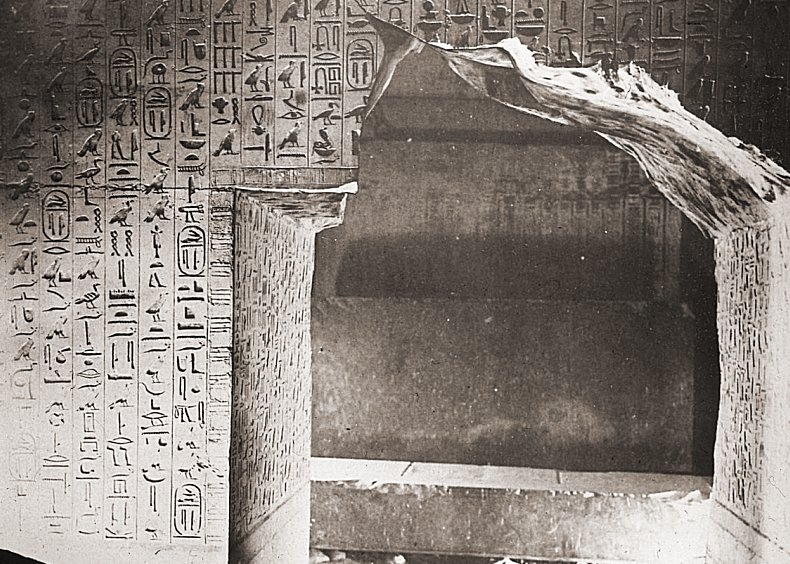Unas (Unis): First Pharaoh Who Decorated His Burial Chamber With Pyramid Texts
Angela Sutherland - AncientPages.com - Among the pyramid builders of the Old Kingdom (2686 – 2181) is king Unas (also Unis, Wenis) (2375-2345 BC).
The pyramid of Unas at Saqqara. Credit image - Olaf Tausch - CC BY 3.0
His main claim for fame and reputation is known today thanks to his pyramid, where for the first time in Egyptian history, the burial chamber's walls were decorated with the Pyramid Texts.
Not much is known about Unas, his family, and the kingdom. However, ancient sources suggest that there may have been a period of social instability after his death.
And yet, Unas, the last king of the 5th Dynasty, is probably one of the most mysterious rulers in the history of ancient Egypt because of the inscriptions found in his pyramid that constitute the oldest and most extensive religious document.
Unas (preceded by Djedkare, probably his father) was the ninth and last ruler of the Fifth Dynasty (2494-2345 BC) of the Ancient Kingdom. His daughter married Teti, who would succeed him as king, and who was announced the founder of the 6th Dynasty. However, some scholars do not agree and suggest that the real founder of the Dynasty was Unas himself.
The Pyramid Texts are inscribed on the walls of Unas' burial chamber. Credit image: Brooklyn Museum - Public Domain
Based on the burials near his tomb, king Unas had two consorts Nebet and Khenut, and eight children (Unas-ankh, Iput, Hemetre, Khentkaues, Neferut, Nefertkaues, Sesheshet, and Idut). He probably had a son, who died about ten years into Unas' reign.
According to Manetho, an Egyptian high priest who lived during the 3rd century BC, Unas probably had no sons and died without a male heir. This problem was resolved when Unas' daughter Iput became queen/wife by marriage to Teti, who could take power in the country as the first ruler of the 6th Dynasty.
The name "Unas" is the 32nd name on the list of Saqqara, and he reigned for probably thirty or thirty-three years, which means almost 4,500 years ago (!). Unas' reign is dated to a period of the country's economic decline. At the same time, it was a difficult time for Unas, the ruler without an heir, which led to a short period of political instability.
Pyramid With Interesting and Unusual Interior
Unas's reign is poorly documented, and his temple was found in ruins. The structure - located not far from the complex of Djoser (2667-2648 BC) in north Saqqara - was only 18.9 m (62ft) in height when it was complete and to its surrounding buildings were used limestone blocks transported from the Step Pyramid.
Black greywacke sarcophagus in the funerary chamber of Unas' pyramid. Source
However, there is still much to see in the remains of the Unas pyramid. There is a long causeway leading to the east face of the mortuary temple and the north entrance to the pyramid itself.
Sir Maspero Enters The Pyramid Of Unas
The pyramid was first entered in modern times by Sir Gaston Maspero (1846 – 1916), a French Egyptologist, in 1881, where he discovered long columns of hieroglyphic texts covering the walls of the pyramid's interior. It is known that the tomb of Unas was sealed ca. 2348 BC, so the texts remained unaltered for more than 4200 years. Maspero had an opportunity to witness the earliest 'Pyramid Texts' found inside the temple.
The pyramid of Unas contains only 283 of the more than 700 known spells of the Pyramid Texts.
The texts include 228 spells to help the deceased's soul journey to the next world. Other specific spells were probably recited during the burial ceremony. Maspero also found different formulae meant to protect the dead in the afterlife.
In the texts, Unas is identified with the gods Ra and Osiris. The purpose of the texts was to help the deceased king in the afterlife, mainly because in Unas' time, these two gods strongly influenced ancient Egyptian beliefs.
Alabaster globular vase of Unas. Credit: Public Domain
Innovations of the Pyramid Texts found in the pyramid's interior and pyramid bas reliefs on its inner walls attest to a high quality dated to the Old Kingdom.
"The walls were covered with carved reliefs more reminiscent of the mastaba tombs of the nobles, showing markets and bargaining in progress, ships in full sail, hunting in the desert, small vignettes of desert life, and, most interestingly, scenes of famine which presumably occurred during the reign. On the south side of the causeway are two huge stone-lined boat pits, but whether they actually held wooden boats like that of Khufu or were just symbolic is debatable." 1
"On the outer casing of the south side of Unas' pyramid is an inscription recording the restoration of the pyramid, which had fallen into decay, and the restitution of the king's name. This was done in the 19th Dynasty by Khaemwaset, High Priest of Memphis and one of the many sons of Ramesses II who predeceased him: he might be described as the first conservation archaeologist. Found scattered on the desert face, the inscription was restored and replaced high up on the pyramid in the late 1940s." 1
Unas' pyramid was the first to feature such texts, but what king Unas introduced became the long-lasting tradition accepted by the future ruler in the subsequent Dynasty.
Written by – A. Sutherland - AncientPages.com Senior Staff Writer
Updated on July 3, 2022
Copyright © AncientPages.com All rights reserved. This material may not be published, broadcast, rewritten or redistributed in whole or part without the express written permission of AncientPages.com
Expand for referencesReferences:
- Clayton P. A. Chronicle of the Pharaohs
Grimal N. A History of Ancient Egypt
More From Ancient Pages
-
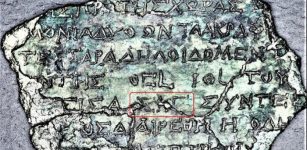 Humans Have Been Predicting Eclipses For Thousands Of Years, But It’s Harder Than You Might Think
Archaeology | Apr 20, 2023
Humans Have Been Predicting Eclipses For Thousands Of Years, But It’s Harder Than You Might Think
Archaeology | Apr 20, 2023 -
 Medusa – Cursed By Athena And Killed By Perseus
Featured Stories | Jul 30, 2018
Medusa – Cursed By Athena And Killed By Perseus
Featured Stories | Jul 30, 2018 -
 What Happened To The Ancient Tribe That Entered A Secret Underground World And Never Came Back?
Ancient Mysteries | Feb 1, 2021
What Happened To The Ancient Tribe That Entered A Secret Underground World And Never Came Back?
Ancient Mysteries | Feb 1, 2021 -
 Illuminati: Facts And History About The Secret Society
Featured Stories | Mar 30, 2017
Illuminati: Facts And History About The Secret Society
Featured Stories | Mar 30, 2017 -
 Why Did Ancient Egyptian Scribes Face Serious Health Risks?
Archaeology | Jun 27, 2024
Why Did Ancient Egyptian Scribes Face Serious Health Risks?
Archaeology | Jun 27, 2024 -
 Heuneburg Early Celts’ Settlement: Wine Was Available To All Residents Not Only To Elite
Archaeology | Oct 25, 2019
Heuneburg Early Celts’ Settlement: Wine Was Available To All Residents Not Only To Elite
Archaeology | Oct 25, 2019 -
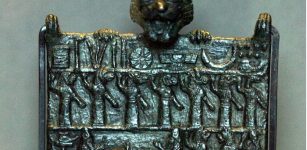 Lamashtu Plaque: Assyrian Healing Device Against The Evil Goddess
Artifacts | Mar 16, 2023
Lamashtu Plaque: Assyrian Healing Device Against The Evil Goddess
Artifacts | Mar 16, 2023 -
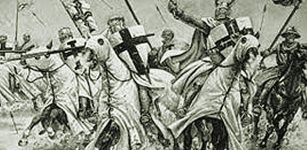 On This Day In History: Battle Of The Rhyndacus – Oct 15, 1211
News | Oct 15, 2015
On This Day In History: Battle Of The Rhyndacus – Oct 15, 1211
News | Oct 15, 2015 -
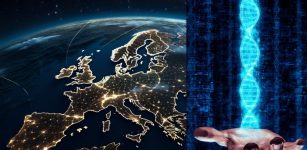 Previous Studies Of European Genetic Ancestry May Be Inaccurate – Re-Evaluation Is Needed
DNA | Nov 8, 2023
Previous Studies Of European Genetic Ancestry May Be Inaccurate – Re-Evaluation Is Needed
DNA | Nov 8, 2023 -
 Mysterious Steles Of Mongolia – ‘Deer Stones’ In The Tsatsyn Ereg Necropolis
Archaeology | Jan 23, 2019
Mysterious Steles Of Mongolia – ‘Deer Stones’ In The Tsatsyn Ereg Necropolis
Archaeology | Jan 23, 2019 -
 Entrance To An Unexplored Ice Age Cave Discovered Near Engen!
Archaeology | Aug 4, 2023
Entrance To An Unexplored Ice Age Cave Discovered Near Engen!
Archaeology | Aug 4, 2023 -
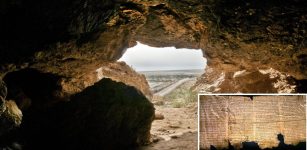 DNA Sheds New Light On The Mysterious Dead Sea Scrolls
Archaeology | Jun 2, 2020
DNA Sheds New Light On The Mysterious Dead Sea Scrolls
Archaeology | Jun 2, 2020 -
 World’s Oldest Burial Site Reveals Homo Naledi Buried Their Dead 100,000 Years Before Humans
Archaeology | Jun 6, 2023
World’s Oldest Burial Site Reveals Homo Naledi Buried Their Dead 100,000 Years Before Humans
Archaeology | Jun 6, 2023 -
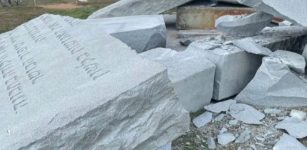 Georgia Guidestones Damaged By An Explosive Device – By Whom And Why?
News | Jul 7, 2022
Georgia Guidestones Damaged By An Explosive Device – By Whom And Why?
News | Jul 7, 2022 -
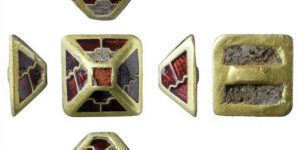 Magnificent ‘Sword Pyramid’ Lost By A Sutton Hoo-Era Lord Discovered In Norfolk
Archaeology | Aug 21, 2021
Magnificent ‘Sword Pyramid’ Lost By A Sutton Hoo-Era Lord Discovered In Norfolk
Archaeology | Aug 21, 2021 -
 On This Day In History: Battle Of Las Navas De Tolosa Was Fought – On July 16, 1212
News | Jul 16, 2016
On This Day In History: Battle Of Las Navas De Tolosa Was Fought – On July 16, 1212
News | Jul 16, 2016 -
 Painted Tikal Altar Unlocks The Ancient Secrets Of A Mysterious Maya Period
Archaeology | Apr 9, 2025
Painted Tikal Altar Unlocks The Ancient Secrets Of A Mysterious Maya Period
Archaeology | Apr 9, 2025 -
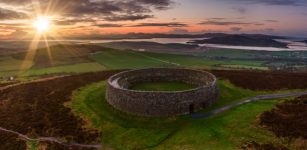 Legendary Grianán Of Aileach Built By God Dagda Of Tuatha De Danann Was Once The Royal Seat Of The Kingdom Of Ailech
Featured Stories | May 13, 2021
Legendary Grianán Of Aileach Built By God Dagda Of Tuatha De Danann Was Once The Royal Seat Of The Kingdom Of Ailech
Featured Stories | May 13, 2021 -
 Mysterious 1,800-Year-Old Roman Marble Inscription Found In The Ancient City Of Aigai Deciphered
Archaeology | Oct 5, 2022
Mysterious 1,800-Year-Old Roman Marble Inscription Found In The Ancient City Of Aigai Deciphered
Archaeology | Oct 5, 2022 -
 Vatican Secrets – Dangerous Knowledge And Invention That Could Alter History
Ancient Mysteries | Dec 14, 2018
Vatican Secrets – Dangerous Knowledge And Invention That Could Alter History
Ancient Mysteries | Dec 14, 2018


